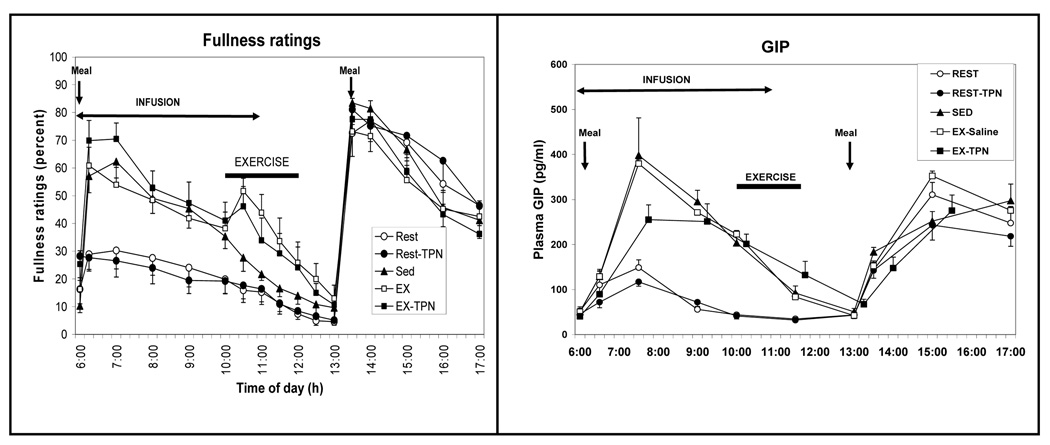Figure 2.
Ratings of fullness (left) and changes in the concentration of gastric insulinotropic peptide (GIP; right) in response to differences in meal size, exercise energy expenditure, and total parenteral nutrients (TPN). Symbols as in Figure 1. Four treatment trials: a small meal (Rest), exercise (EX), and intravenous replacement of calories missing in the small meal (Rest-TPN) or expended during exercise (EX-TPN). A sedentary trial in which a large morning meal was provided (Sed) served as a control condition. [Adapted from Borer KT, Wuorinen E, Ku K, Burant C. Appetite responds to changes in meal content, whereas ghrelin, leptin, and insulin track changes in energy availability. J Clin Endocrinol Metab 2009;94:2290–2298. Copyright © 2009 The Endocrine Society. Used with permission.]

